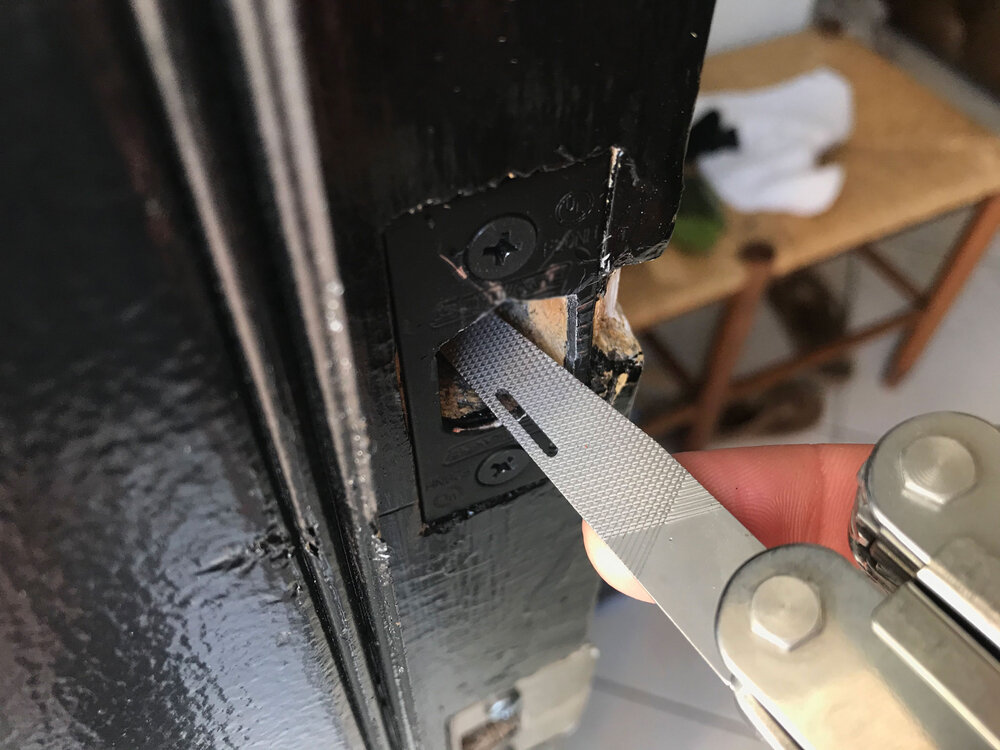Sometimes you end up with a jammed lock or a stuck lock that means you can’t get into a room, your house, or your car properly. You can’t have a door misaligned from the deadbolt or loose setscrews without ending up with a door jam.
These are things you can fix if you have a little bit of knowledge, the right supplies, and the ability to determine what the problem is. Below we will show you what’s needed to fix your jammed and stuck locks, or what your locksmith could do if you want the professional job done for your home.
Determining the jam or stuck lock
To determine if you have a jam or stuck lock, you’ll want to look at a number of things first. The first sign may be that your knob will turn but the door won’t open. Another may be that the door lock is stuck in an unlocked position, but you’ll want to check to see if another key will work in case your key has been damaged. Perhaps the doorknob lock button is stuck or maybe your deadbolt is stuck in a locked position.
Examine the situation to make sure you know what needs to be fixed and how to handle it. for a stuck button, try turning the handle while pushing and holding the lock button, and then jiggle the handle to see if it helps. If the door lock is stuck in an unlocked condition, try to see if the door will lock when it is ajar in case of an alignment issue.
Get some supplies
Next, you’ll want to get some supplies to check for different issues. You may need to use powdered graphite or TD-40 as a lubricant to help with jammed locks. Get a key-extractor tool and screwdrivers or a multi-magnetic hand tool with a screwdriver set. You may want to use kerosene for any rust removal.
Addressing various issues
Once you’ve tried to unlock the door with a different key in the event that you have the wrong key or a damaged key, you may have a temperature issue. Try to warm up the house if the home has gotten too cold. If it’s a hot location, you may have excess oil or dust, which you can check your key for stickiness or accumulation.
Next, try a key extractor to fix a lock that has a broken key jammed inside. You may need to spray some of that lubricant in the keyhole to make for a smoother removal. A sticky lock happens when a door gets older, so the dry lubricant of the powdered graphite can help to smoothen the jam.
Avoid a WD-40 since it will attract dirt, unlike the TD-40 or graphite. If you’re dealing with rust that is causing the jam, soak your lock in kerosene for a day to remove the rust. Feel free to lubricate the spring mechanism with some Teflon lubricant which will help if it’s becoming faulty and the deadbolt isn’t retracting completely.
Lastly, you may need to use a screwdriver or the multi-magnetic hand tool to fix your jammed lock. This can help you to tighten screws and bolts in the event that something has come loose. Try tightening the hinges if your door is loose on its hinges because it may be causing your latch to sit too low on the striker plate.
Is there a gap between the door and the doorframe? You’ll also want to tighten the set screw because you could have a loose setscrew making the door not opening despite the knob turning.
You don’t have to address a jammed lock or stuck lock on your own. The professionals at Chicago Emergency Locksmith can handle a jam like this in no time and carry the proper tools and skillset for situations like yours.

